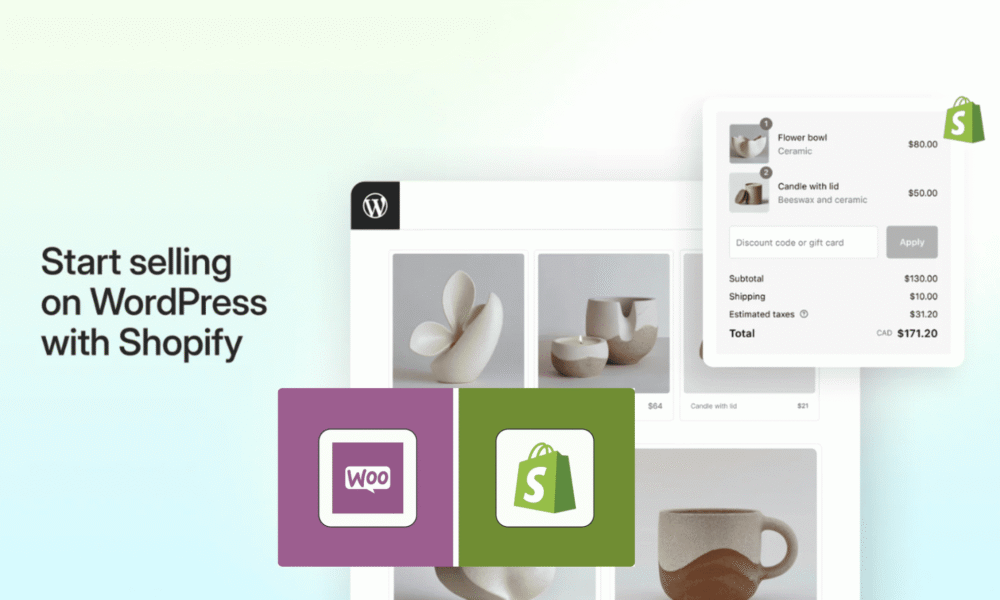If you love WordPress CMS but you want the power of Shopify's…
How to Back Up Shopify Store in 2 Minutes (Free Guide )

Today we discuss the steps required in order to Back Up Shopify Store. The reason for backing up the Shopify store is to protect your business from any scenarios that may happen.
You will want to have this done on occasion because without it, and you are not guaranteed that your store will be in the same state as when it was first created.
It is essential to back up your Shopify store because you may lose all of the information on your website if you don’t have a backup.
When the store gets lost, it is vital to get it back up and running as soon as possible.
The first step in backing up your store is to make sure you have a good backup plan in place.
This includes having a backup plan that is in place for your website and the data on it.
It is also essential to have a plan in place for what happens if you lose your website or an element of it,
Shopify stores contain a lot of information about your store and its products. It includes essential details such as:
- Products
- Orders
- products
- Orders
- Shipping rates
- Discounts and coupons.
It would be best if you backed up your Shopify store because:
- You may need to restore a previous version of the site if it has been corrupted or hacked.
- You need to back up a Shopify store to restore it if your store is ever lost.
If you’re running an online business, you’ve probably heard of the phrase “backing up your data.” You may not know what it means, but you can be sure it’s essential.
Today, we’re going to talk about how to back up your Shopify store. It’s vital that you take this step because if anything ever happens with your site and it goes offline, you’ll lose all of the hard work you’ve put into building up your business.
Shopify is a fantastic platform for entrepreneurs who are looking for a quick way to get started with their own online stores.
One of the downsides, though, is how easy it can be for data to go missing or be deleted by accident – which could lead to some major headaches later down the line!
Fortunately, there are steps that can help ensure that any lost data gets restored as quickly as possible – and in a safe manner too!
Back Up Shopify Store: Back Upand Store duplication
You may back up your Shopify data using CSV files from the admin. You may combine these CSV files with other information (for example, a copy of your theme) to create a backup or duplicate of your store.
What are CSV Files
A standard file format for spreadsheets is CSV, which stands for comma-separated values. You may import and export products, customers, inventories, orders (export only), and discounts using CSV files.
They’re helpful in a variety of situations, such as when you want to move from another eCommerce platform to Shopify or import a list of customer accounts.
Although there’s a lot to be gained by learning how to work with CSV files, let’s start with an overview of what they are and why you may need them. They’re not only useful for storing data; in many situations, their format makes them ideal for specific tasks.
The character set used to encode your CSV files must be UTF-8.
If you need to migrate a large amount of product data from Shopify to another program, you can use a spreadsheet that’s been prepared for the purpose. CSV files (comma-separated value) are used by Shopify to carry out this type of bulk activity.
There is a file size limit of 15MB per file for products and inventory and 1MB per file for customer data when importing information using a .csv file.
If your CSV files are more significant than these limits, you’ll have to import the data in batches.
Get a sample CSV file Of Shopify Products.
To assist you in comprehending the template, see a sample product CSV file in the image below.
The repository contains a sample product, as well as a few variants. Your import file is likely to include many more items and variants. If you use the supplied example file to generate your own import file, be sure to erase all of the test products.

The Variant Inventory Qty column is not included in the server sample file and is only used for shops with a single location.
If you have various locations and want to import or export inventory quantities, use the inventory CSV file instead.
Product CSV file format
The first line of your product CSV file must contain the column headers identical to those in the sample CSV file and in the same order.
A comma should separate each column. In your product’s second set of lines, use the columns in that exact order.
If you’re using Excel to edit your CSV, be sure to check Excel’s export settings when you export the CSV.
How To Overwrite Product Details With an Import CSV File
You can also choose to replace any existing products with the same handle when you import a CSV file. Any missing columns will be filled in based on the current values.
If you pick this option, the values in the CSV file replace the values in any matching columns in your product list when the handle in the import CSV file matches an existing alias.
If the overwrite choice isn’t selected, existing handles will be ignored when CSV data is imported.
If a required column in the import CSV file is blank, the corresponding value in the product list is deleted and replaced with “.”.
Because of this, the Type column in your existing product list may have a different value than that shown in the CSV file you import. For example, although the Type value in your current product list is Snowboard, the Type column is empty in the CSV file that you import, and it is subsequently overwritten with blank.
If a non-mandatory column is not included in the import CSV file, yet is present in the existing product list, then the value in the product list remains unaltered.
If the Variant Image column is present in the existing product list but isn’t in the import CSV file, then the value in the product list remains unchanged.
Prepare your images
A CSV file can only contain text. So you need to make sure all product images are on an existing website. Those image URLs are only used during the CSV file importing process (in other words, you can delete them when your import is done).
- If the files are on your computer only, you must upload them to your Shopify store or another image hosting service to link to their URL.
- If you’re switching to Shopify from another platform, you can copy the current image URLs and use them in the CSV file.
- If the product CSV file was produced by exporting your products from Shopify, then you don’t need to do anything because your images are already on your website.
Caution
If you remove products or product images from your Shopify store after exporting and try to import those products without updating their image URLs, your import fails.
When you have URLs for each product image, you can start building your CSV file.
How to Add multiple product images in a CSV file
You may add additional product pictures to your CSV file by adding new photos to your Shopify admin.
If you’re creating your Shopify store from a CSV file, the process is slightly different. Here’s what you need to know:
You need to be able to modify a CSV file. To view a formatted version of your CSV files, Shopify suggests using Google Sheets.
Up to 250 pictures may be included in a product.
The images must be accessible through a public link. That is, they should be secured using an HTTPS:// protocol with no password protection.
Upload media to the Shopify admin’s Files area to accomplish this. The URLs are generated automatically.
You may upload as many photos as you want using the bulk upload option. To use this function, go to a folder containing your images and select Upload files from the drop-down menu. Select up to a handful of pictures at a time by clicking Upload files after selecting Upload files from the drop-down menu.
Importing Shopify products with a CSV file
Before you begin, make sure you have a backup of your product data. Sorting a CSV file by a spreadsheet program such as Microsoft Excel or Numbers may result in the loss of your products’ pictures from their associated image links on the CSV.
How To Import products from another store
If you are importing from a source that used a different format for your CSV file, make sure the two match. If the structure of the file isn’t correct or if there are any missing headers, the import will fail.
It is recommended that you have a maximum file size of 15MB for your product CSV. If you receive an error when attempting to upload a new CSV file, double-check to see whether it exceeds the maximum file size limit.

- Steps: From your Shopify admin, select Products > All products.
- Click Import.
- Select the file that you would like to import from. In the Import products by CSV file window, click Choose File.
- Locate your CSV file and then click Open.
- Then Click Upload file.
At the email address you used to set up your Shopify store, you receive a confirmation email from Shopify when your CSV file is submitted.

How to Import Products With A CSV
If you wish to modify your items using a CSV file, you must first export them.
You can edit your CSV file in a spreadsheet program like Google Sheets, then import it back into the Shopify admin.
If you use an app like Oberlo to import products into your online store, you can’t utilize a product CSV to import changes thereto. When you import items using a CSV, your Oberlo goods orders will stop synchronizing.
Steps:
- From your Shopify admin, go to Products > All Products.
- Click Import Button.
- Click the Choose File button in the Import products by CSV file window.
- Open the CSV file by locating it and clicking “Open.”
- Select the Replace any current products with the same handle option. This supersedes any Shopify data. Columns that aren’t in the CSV file retain their product data, even if it’s not used. For example, suppose a CSV file contains a red-socks product handle and that your Shopify store already has one. The CSV file contains all of the product’s fields but lacks the Price column. When you upload this CSV file to your Shopify shop, all instances of red socks will be replaced by those in the CSV file.
- Click Upload file.
When your CSV file has been sent, you will get a confirmation email from Shopify at the email address used to set up your Shopify store. Read on for some possible solutions to common issues.
Tip
We recommend using the Google Chrome browser if you’re having difficulties uploading your CSV file.
Conclusion on on how to Back up Shopify store
It is easy to get caught up in the hustle and bustle of running a business. You might be so busy trying to keep your Shopify store afloat that you forget about one important task – backing up your Shopify store data!
If anything ever happens, such as if there’s an error or virus on your computer, it will take only seconds for all of the information saved to your hard drive (including customer contact info) to disappear permanently.
If you are moving from one platform to Shopify then you can read our posts on migrating to Shopify which covers the major platforms that integrate well with Shopify.
Any question in readers to backing up the Shopify store? comment below.




Comments (0)